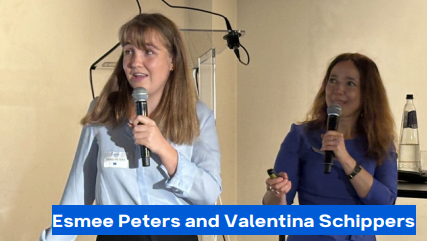Capacity Building in Innovation Procurement: a critical need for public buyers and strategic objectives
This article delves into the key insights shared during the SIPE (Scaling-Up Innovation Procurement in Europe) Conference, on 18th June, on how to effectively equip public buyers with the necessary skills, knowledge, and tools to embrace innovation in their procurement practices.
Highlights from the “Capacity Building in Action” Session
One of the most impactful sessions at the SIPE Conference was the “Capacity Building in Action,” where various projects under the IPTF group shared their approaches to enhancing the capabilities of public buyers in procuring innovation.
Esmee Peters and Valentina Schippers presented insights from the PROCEDIN Project, emphasising the importance of linking key resources with stakeholders, such as public authorities, SMEs, and educators. They outlined four critical perspectives on procurement: legal, collaborative, strategic, and innovative. Their presentation stressed that innovation should not be an end in itself but a tool to achieve broader strategic goals, such as sustainability.
They also highlighted the value of tailored resources, including training videos, frameworks, and case studies, to support these diverse approaches to procurement. A perfect example of this practice is the Resources Bank of the PROCEDIN project. Creating an ecosystem for collaboration among stakeholders is crucial for integrating innovation procurement into regular business practices. The PROCEDIN is working on its Community of Practice, to centralise communication and resources for the benefit of innovation boost.
Anna Tórz presented the BUILD Project’s approach, which focused on understanding the unique needs of each municipality through empathy mapping and direct interaction. She emphasised the importance of knowledge sharing, practical tools, and workshops in fostering collaboration and capacity building. She identified common challenges, such as budget restrictions and the complexity of innovation procurement, and proposed practical solutions, including the evaluation of procurement potential and the promotion of interdepartmental collaboration.

Practical Solutions for Capacity Building
The IPTF Conference underscored the need for practical, actionable solutions to enhance the capacity of public procurement officials. Key takeaways include:
Tailored Training Resources
The importance of providing customised training materials, such as videos and case studies, that cater to the specific needs of different stakeholders in the procurement process. This approach ensures that the training is relevant and immediately applicable. The PROCEDIN project organised several trainings for buyers and suppliers. While if you need inspiration through case studies, you can rewatch the BUILD webinar showcasing its partners’ best results.
Knowledge Sharing and Collaboration
Establishing platforms for knowledge sharing and collaboration among municipalities and public buyers. The BUILD Project’s emphasis on empathy mapping and stakeholder engagement is a prime example of how understanding the needs and challenges of different parties can lead to more effective innovation procurement strategies. You can read more about it on the BUILD Insights Report.
Case Study: Health InnoFacilitator Project
The Health InnoFacilitator Project, presented by Silvia Paolella, offered a compelling case study on how capacity building can be effectively implemented in the healthcare sector. She identified critical issues such as insufficient investment in innovation, a lack of knowledge among public buyers and SMEs, and inadequate partnership and cooperation between these groups.
To tackle these challenges, the project set out six clear objectives, including fostering a sustainable community, increasing awareness and skills, and leveraging buyer capacity. Capacity building was at the heart of this project, with training workshops and webinars designed to equip public buyers with the necessary tools and knowledge. Despite initial difficulties in engaging public buyers, particularly in hospitals, the project ultimately succeeded in attracting participation and driving innovation procurement forward.
Conclusion
In this Conference session, it was made clear that building capacity for innovation procurement is not just an option but a necessity. For policymakers, the message is clear: investing in capacity-building initiatives will pay dividends in the form of more effective, efficient, and innovative public services.
Source: SIPE Conference Insights Report

